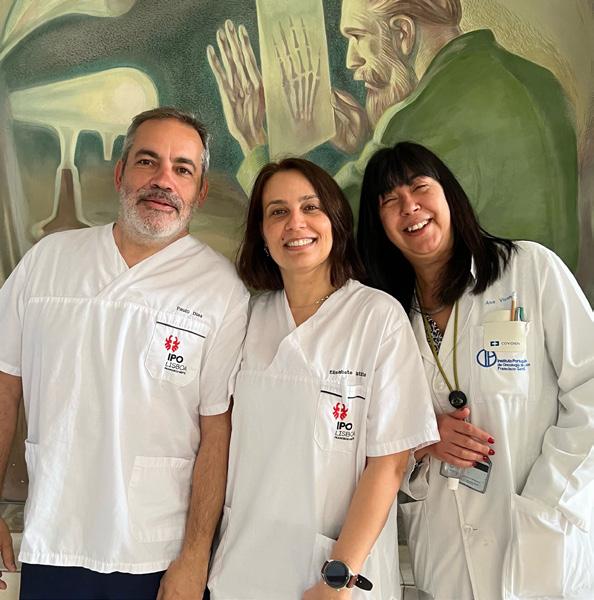Artigos de Investigação
Evaluation of doses in reirradiation of spinal cord:
impact of the two different calculation algorithms – Acuros External Beam (AXB) vs Anisotropic Analytical Algorithm (AAA) Adriana Sofia Faria Gomes, Msc1,3, Joana Lencart, PhD2, 3 1
Técnica de Radioterapia, Instituto Português de Oncologia do Porto FG, EPE 2
Diretora do Serviço de Física Médica, Instituto Português de Oncologia do Porto FG, EPE 3
Centro de Investigação - Grupo de Física Médica, Radiobiologia e Proteção Radiológica, do Instituto Português de Oncologia do Porto FG, EPE
Abstract Re–irradiation of common regions in the different treatment courses is an important problem due to the cumulative dose delivered in the organs at risk, which can cause serious effects. The accuracy of dose calculation is crucial for the correct evaluation of doses of target volumes and organs at risk, therefore the comparison of different calculation algorithms is extremely important. Recalculation with the Acuros External Beam (AXB) algorithm in patients where spinal cord or brainstem re-irradiation occurs, in treatment plans previously performed with the Anisotropic Analytical Algorithm (AAA). The principal aim consists in determining whether a clinically relevant difference exists between the two calculation algorithms in this context. In this study, 71 patients were included in which two or more radiotherapy (RT) treatments were administered and there was an overlap of the spinal cord region or brainstem. These patients were treated in IPO-Porto between September 2008 and June 2019. A total of the 149 plans were recalculated with AXB algorithms, in the EclipseTM treatment planning system version 13.5. Three groups were considered, group I and II correspond to the irradiation of the spinal cord and brainstem, respectively, when the target volume is close to these organs. Group III corresponds to the spinal cord irradiation when the target volume is spinal metastases. No side effects on the spinal cord or brainstem have been reported. After recalculation plans, it was found group III obtained more dosimetric parameters 36
RADIAÇÕES Nº8 - Abril 2022







